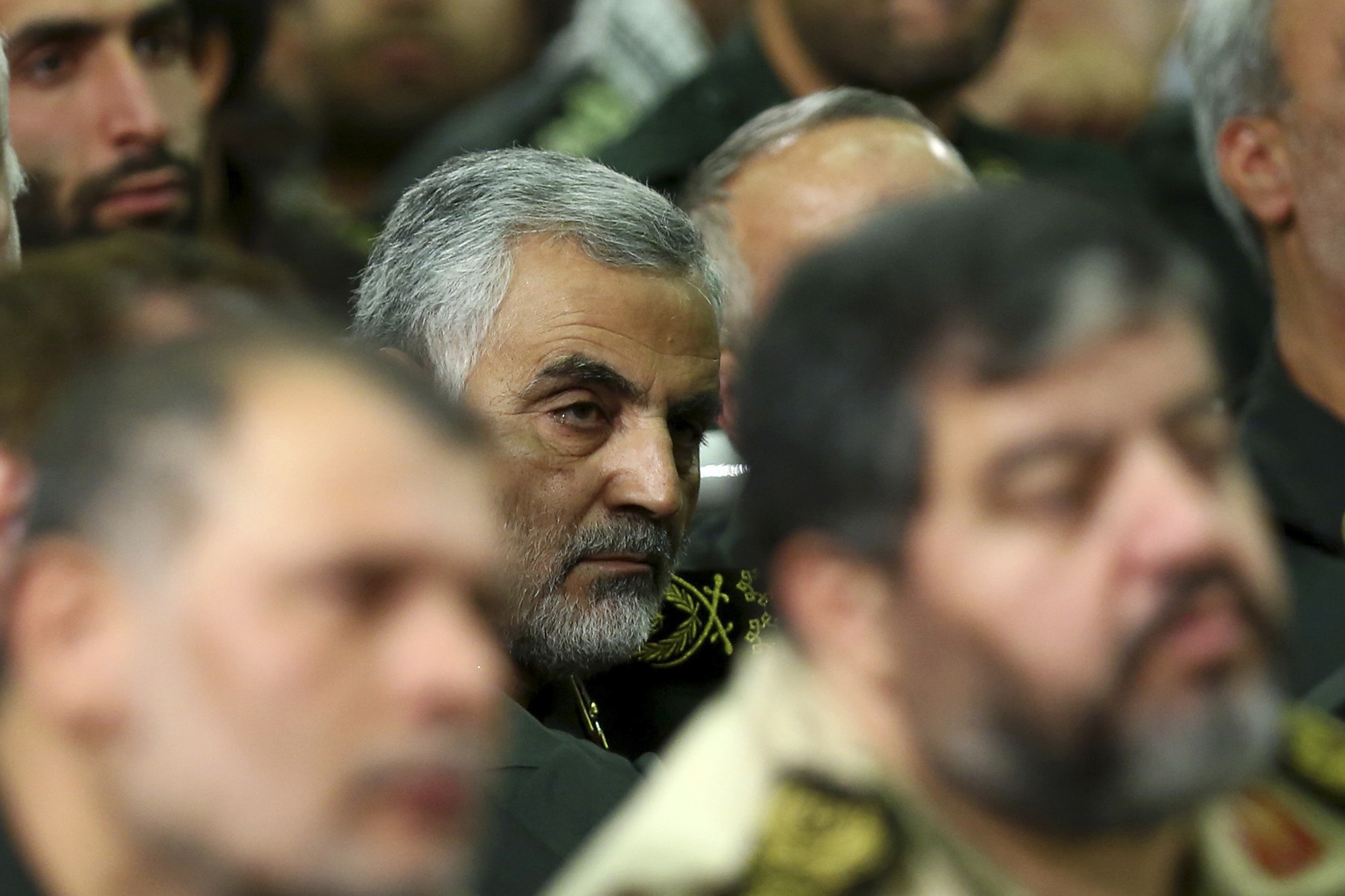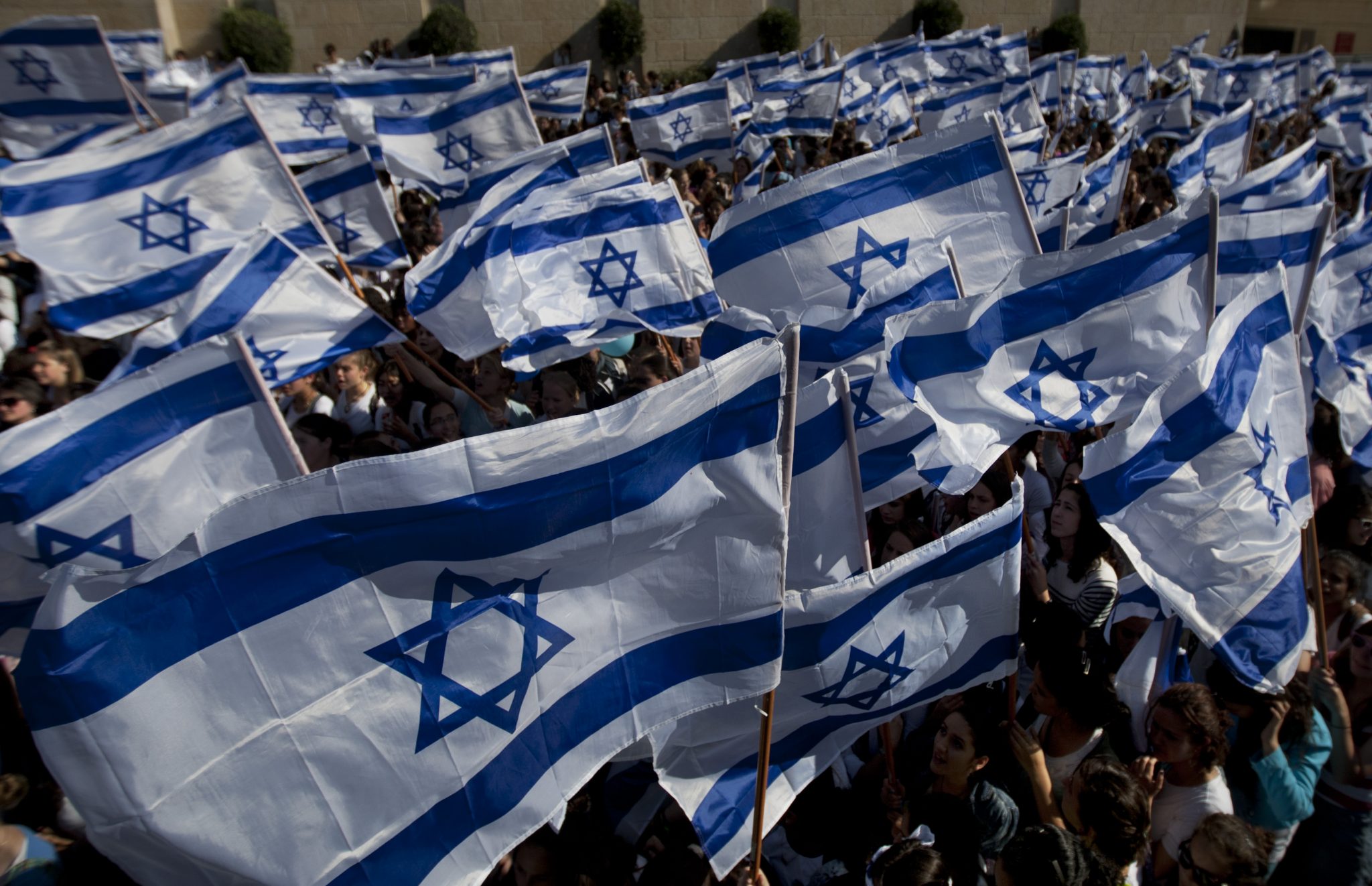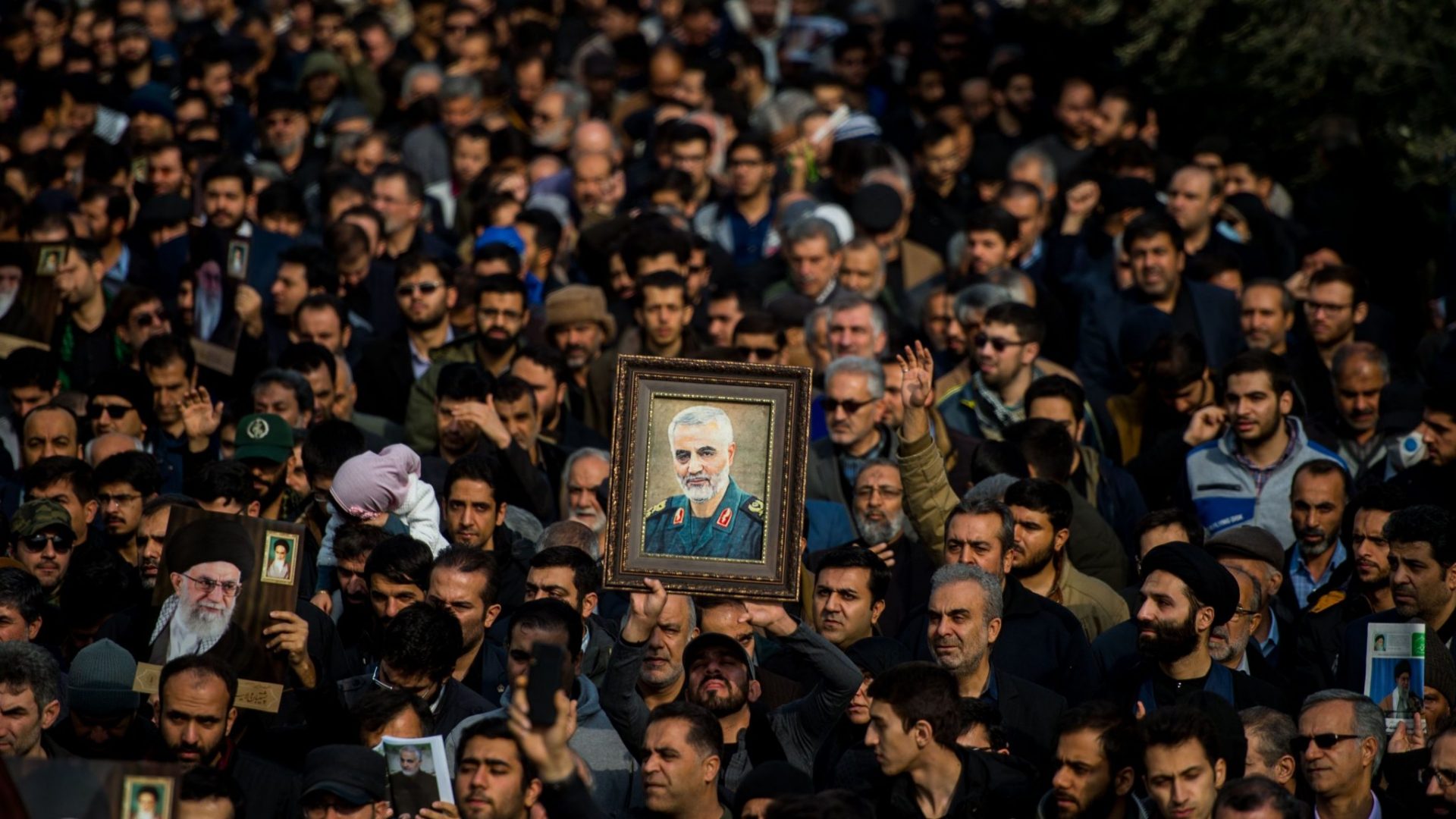
[toggler title=”DISCLAIMER” ]All opinions in this column reflect view of the autor(s), not of Vocal Europe[/toggler]
[dropcap size=small]Iran’s theocratic regime, which has maintained power domestically via brutal oppression for over four decades, is continuing its devastating expansionist policies across the Middle East, paying no heed to the bloody results of its subversive policies.
Tehran has done everything possible to increase its power and gain greater presence in the Arab region, including backing despotic regimes like that of Assad in Syria, despite claiming implausibly to back Arab uprisings in a bid to expand its influence.
The fallout from Iran’s policies methods is not limited to the terrible destruction in those regional nations where the regime has established a foothold, but also seems to be wreaking havoc on the Iranian state itself.
Iran’s regime and the entire country are isolated, exhausted, and militarily and financially stretched to their limit. The regime has pinned its hopes of wresting control over the region especially in Syria and Iraq on Qassem Suleimani, the head of the Quds Force and the chief architect of Iran’s terror. Meanwhile, more Western-friendly faces of the regime, like President Hassan Rouhani and his foreign minister Javad Zarif, have been deployed in the regime’s diplomatic offensive to provide a veneer of reformist liberation and win foreign support.
All these deceits seem not to be working. Although the monolithic regime is injecting billions of dollars to serve its saboteur’s agenda, the situation across the region, especially in the hotspots where Iran has deployed its proxy militias most heavily, tell of the ignominious failure lurking just beneath the surface, awaiting the right moment to surface.
Recent indications suggest that the regime’s regional clout is waning, with the proxy militias starting to fall out among themselves. Failure on the ground and rising public discontent among local populations make it impossible for them to follow through with Iran’s political program.
In Lebanon and Yemen, the Iranian regime has two militias: Hezbollah and the Houthis. Both have massive weapons arsenals, as well as wielding considerable clout in the political arena.
Hezbollah also works in support of Assad’s regime in Syria, along with other Iranian-backed militias from Iraq, Afghanistan and Pakistan.
Calls have been rising in recent months to disarm Hezbollah, prompted by both its increasing terror activities in Syria since 2012 and its jeopardizing of Lebanon’s domestic security.
These developments signal that the Iranian regime’s grip in these nations is weakening.
Domestically within Iran, meanwhile, things seem to be worse than ever. The Iranian regime is beleaguered on all sides, while the economy faces massive setbacks, as the Islamic Revolutionary Guards Corps (IRGC) tightens its grip and drains the country’s coffers to fund regional wars and expansionism.
Anger is escalating among the ethnic minorities who comprise over half the population, especially amongst the Kurds and Ahwazis, who seek autonomy and self-determination, and a total break from the regime’s oppression.
Within the regime itself, there are mounting schisms, with the different factions lashing out at each other and indulging in mutual recriminations about the deteriorating situation in the country and the regime’s various disastrous policies, both at home and abroad.
Exploiting Arab Spring
Iran’s regime publicly voiced support for the uprisings against various oppressive regimes in the Arab world which broke out in early 2011, with many viewing the regime’s claims as insincere and motivated by the leaders’ wish to capitalize on and exploit the revolutions for its own benefit, to gain leverage in the region.
Analysts suggest that since the regime possesses none of the attributes necessary to win widespread regional support that would allow it to take over Arab nations by conventional means, with no successful development experience or enviable governance system that Arab peoples might wish to see influencing the direction of their own nations, Iran’s leadership saw the turbulence of the ‘Arab Spring’ as an opportunity for exploitation, allowing it to foment divisions and fuel sectarian schisms, which could be used as part of a ‘divide and rule’ policy.
Iran’s regime wants its 1979 ‘Islamic revolution’ – which itself ended with the crushing of all the country’s democratic parties – to be the sole successful example of an uprising in the region, with any genuinely popular movement for freedom which might threaten the regime’s domination of the Middle East being ruthlessly crushed as in Syria.
Since first coming to power in 1970, Tehran’s regime has planned and worked tirelessly to divide and fragment Arab societies; rather than striving for normal relations with these nations, the regime’s sole objective is to weaken and undermine these countries via infiltration as a prelude to occupation and subjugation.
The regime viewed the Arab Spring as a perfect pretext for putting these plans into operation under the guise of supposedly supporting the revolutions.
The tightly controlled regime media even termed the Arab revolutions collectively as an ‘Islamic Awakening’ in a flagrant bid to hijack them for its own agenda.
In the years since 2011, however, Tehran’s hypocrisy and true oppressive nature have been laid bare, with the ayatollahs providing the most brutal Arab regime that of Bashar al-Assad in Syria, with a near-limitless supply of money, weapons, military advisors and rank and file militiamen.
This has underlined once again that the theocratic regime in Iran has never had any interest in supporting freedom; its sole imperative is expansionism and regional control; in pursuit of this objective it has spent billions of dollars on helping to slaughter and dispossess millions of people and to reduce whole nations to rubble, while claiming implausibly to be fighting terror.
Losing Yemen
Since the Houthi coup in 2015, the Yemeni people have shown a heroic genuine resistance to Iran’s ‘resistance’ regime and its project for regional domination. Iran is keen to retain control of Yemen for several reasons: foremost among these, the regime wants to maintain an unassailable position in the Bab al-Mandab Strait, the main point of entry to the Suez Canal and the Red Sea.
The regime also wants to control the Gulf of Aden and to deploy affiliated forces on the Saudi borders to threaten the stability within its main regional rival; this was a primary consideration in showering the Houthis with weapons and money.
The major losses currently being inflicted on the Houthi militia in Yemen represent a severe blow to the Iranian regime’s regional plans.
The Houthis’ targeting of Saudi cities, including Mecca, Taif and Riyadh, with Iranian-produced missiles, led to infighting among the Houthis and their other accomplices, causing chronic deadlock in the political process in the country and widespread anger among many Yemenis.
Thousands of Yemenis took to the streets of Sanaa, demanding the ousting of the militias from the city. In 2014, the Houthis launched what they called a “revolution” against the legitimate government in Sanaa.
Despite the Houthis’ best efforts and the devastation wreaked in their ongoing battle for control, however, forces affiliated with Yemen’s General People’s Congress (GPC) recently gained “complete control” of the Sana’a Airport from the Houthi militias.
The GPC-affiliated forces also recently recaptured the Sabaa Media Agency, Yemen’s central bank and many Embassy buildings, most prominently the Saudi, Emirati and Sudanese embassies, along with the Defense Ministry building.
Iran’s regime, panicking over its inevitable defeat in Yemen, resorted to promoting a fictional victory over ISIS weeks before the Yemenis’ uprising; in truth, the Iranian regime is widely known as the ‘godfather of ISIS’, using the terror group whenever it provides a useful figleaf.
On these severe losses, experts say the end of Iran’s presence in Yemen is imminent, with Tehran set to lose on numerous levels as the current push by Yemeni forces continues. These losses are almost as painful to Iran’s regime as the financial losses it has sustained through its campaign in the country, spending at least $10 billion to date on its funding and military assistance for the Houthis.
Iranians are likely to wonder where the regime directed these massive amounts of money, especially while poverty continues to worsen at home and enthusiasm for the regime’s regional wars wanes.
The losses in Yemen will also prompt all but the most blindly loyal among the regime’s Hezbollah proxies to question their leadership over its decision to send countless young men, and even child soldiers, into the vortex of war in Syria.
Minorities disgruntled
The regime is unrelenting in its determination to pursue its objective of expanding its influence beyond borders to spread its hardliner Velayat-e Faqih ideology, although this is contested even among Shia themselves.
Ultimately, the result of the regime’s regional policies will be losses in every area, domestically as well as regionally, with the grim daily statistics and increasing regional tensions also taking a heavy toll on the home front, where increasingly the sizeable ethnic minority population are demanding their rights and freedom from a regime which has long used every means at its disposal, including torture and execution, to stymie dissent.
Some analysts have predicted that the Ahwazis, Turks, Kurds, Baluchis and other minorities, will be in the vanguard of those who will revolt against the savagely repressive theocracy.
Those groups which have experienced every form of torture, discrimination, oppression and marginalization at the regime’s hands are unlikely to accept the status quo for much longer, even under supposed reformists.
All of these groups are keenly monitoring the behavior of the US under the Trump administration towards Iran.
According to the latest reports from Iran, the regime is stepping up domestic security, becoming increasingly fearful of a domestic uprising, although the regime is still using its tools of repression and intimidation, it is likely that the leadership is preparing itself to react against outbursts of public anger.
One sign of the regime’s concerns over domestic unrest is the recent visit of President Hassan Rouhani to the province of Sistan and Baluchistan, where he gave a lengthy speech, underlining the necessity of sticking to unity.
During this visit, some Iranian regime officials made remarks, tacitly threatening the eastern and southern provinces.
Speaking on condition of anonymity to protect him from prosecution, a Baluchi political activist inside Iran suggests that the regime may unleash terror groups in these areas to justify repression of any popular uprisings, a technique it has deployed elsewhere in the region. These groups will be tasked with aborting any insurgencies or uprisings against the regime, he added.
Failure has been the hallmark of the regime’s policies in recent years. It squandered billions of dollars in military adventures led by militias beyond its borders.
That commentator and others suggested that the situation is likely to deteriorate further for the regime, with the IRGC likely to be listed as a terror organization. This is before even mentioning the gloomy prospects for the 2015 JCPOA nuclear deal which Donald Trump threatening to tear up the landmark agreement.
Some analysts speculate that the situation is likely to go downhill for the regime within the next few months, citing reports which contradict the regime’s own claims and show it suffering massive losses across the region, particularly in Iraq, Syria and Yemen.
Ultimately, Tehran’s plans for regional hegemony are doomed to fail, with the regime facing massive challenges which it is not equipped to tackle.
Domestically, tensions with none- Persian ethnic minorities are rising, while the economy is in a tailspin, and the return of multiple coffins daily carrying the remains of the fighters sent to the battlefields of Syria and Iraq is further increasing anger and disillusionment among the Iranian public. How many more signs are needed that the Iranian regime is teetering on the brink and that its project for regional hegemony is destined to fail?



